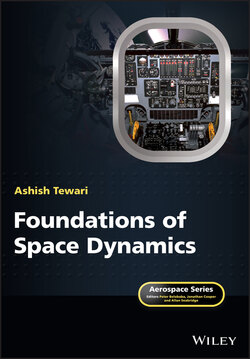Читать книгу Foundations of Space Dynamics - Ashish Tewari - Страница 11
Preface
ОглавлениеFoundations of Space Dynamics is written as a textbook for students, as well as a ready reference covering the essential concepts for practicing engineers and researchers. It introduces a reader to the basic aspects of both orbital mechanics and attitude dynamics. While many good textbooks are available on orbital mechanics and attitude dynamics, there is a need for a direct, concise, yet rigorous treatment of both the topics in a single textbook. Important derivations from basic principles are highlighted, while offering insights into the physical principles which can often be hidden by mathematical details. While the emphasis is on analytical derivations, the essential computational tools are presented wherever required, such as the iterative root‐finding methods and the numerical integration of ordinary differential equations.
The objective of this book is to provide a physically insightful presentation of space dynamics. The usage of simple ideas and numerical tools to illustrate advanced concepts is inspired by the work of the original masters (Newton, Liebnitz, Laplace, Gauss, etc.), and is combined with the application and terminology of modern space dynamics.
A student of space dynamics in the past generally possessed a strong background in analytical mechanics, often reinforced by such classical treatises as those by Whittaker, Lanczos, Truesdell, and Mach. Today, the exposure to analytical dynamics is often based upon a single undergraduate course. This book therefore includes a basic introduction to analytical mechanics by both Newtonian and Lagrangian approaches.
The contents of the textbook are arranged such that they may be covered in two successive courses: Space Dynamics I could focus on Chaps. 1–7 and 11, while the following course, Space Dynamics II, could cover Chaps. 8–10 and 12, supplemented by a semester project exploring a specific research topic. However, the arrangement of the chapters in the book offers sufficient flexibility for them to be covered in a single comprehensive course, if so required. There are a multitude of exercises at the end of the chapters which can serve as homework assignments and quiz problems. Solutions to selected exercises is also provided.
I would like to thank the editorial and production staff of Wiley, Chichester, for their constructive suggestions and valuable insights during the preparation of the manuscript.
Ashish Tewari
May 2020
